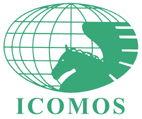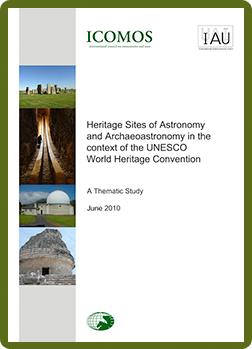| Preface, Acknowledgements, and Further information |
 |
|
| List of authors |
 |
|
| Introduction |
 |
|
| Chapter 1: Earlier prehistory |
 |
 |
| |
Case Study 1.1. The Thaïs bone, France |
 |
 |
| |
Case Study 1.2. The decorated plate of the Geißenklösterle, Germany |
 |
 |
| |
Case Study 1.3. The Ishango bone, Democratic Republic of the Congo |
 |
 |
| |
Case Study 1.4. The astronomical rock panels in the Lascaux Cave, France |
 |
 |
| Chapter 2. Later prehistoric Europe |
 |
 |
| |
Case Study 2.1. Stonehenge World Heritage Site, United Kingdom |
 |
 |
| |
Case Study 2.2. Seven-stone antas, Portugal and Spain |
 |
|
| |
Case Study 2.3. The stone circles at Odry, Poland |
 |
 |
| Chapter 3. Pre-Columbian America |
 |
 |
| |
Case Study 3.1. Boca de Potrerillos, Mexico |
 |
 |
| |
Case Study 3.2. Caguana, Puerto Rico |
 |
 |
| |
Case Study 3.3. Chankillo, Peru |
 |
 |
| |
Case Study 3.4. Metallurgical centre of Viña del Cerro, Chile |
 |
 |
| Chapter 4. Indigenous uses of astronomy |
 |
 |
| |
Case Study 4.1. Navajo star ceilings, USA |
 |
 |
| |
Case Study 4.2. Atituiti Ruga, Mangareva, French Polynesia |
 |
 |
| |
Case Study 4.3. Wurdi Youang, Australia |
 |
 |
| Chapter 5. Ancient and medieval Far East |
 |
 |
| |
Case Study 5.1. Taosi observatory, China |
 |
 |
| |
Case Study 5.2. Dengfeng observatory, China |
 |
 |
| |
Case Study 5.3. Beijing ancient observatory, China |
 |
 |
| |
Case Study 5.4. Cheomseongdae observatory, Republic of Korea |
 |
 |
| Chapter 6. India |
 |
 |
| |
Case Study 6.1. Jantar Mantar at Jaipur, India |
 |
 |
| Chapter 7. Mesopotamia and the Middle East |
 |
 |
| Chapter 8. Ancient Egypt |
 |
 |
| |
Case Study 8.1. The tomb of Senenmut at Western Thebes, Egypt |
 |
 |
| |
Case Study 8.2. The temple of Amun at Karnak, Egypt |
 |
 |
| |
Case Study 8.3. The temple of Hathor at Dandara, Egypt |
 |
 |
| |
Case Study 8.4. The pyramids of Giza and related buildings, Egypt |
 |
 |
| |
Case Study 8.5. Napata, Sudan, including the temples of Djebel Barkal and the Nuri necropolis |
 |
 |
| Chapter 9. The Classical World |
 |
 |
| |
Case Study 9.1. The Pnyx at Athens, Greece |
 |
 |
| |
Case Study 9.2. The acropolis of Alatri, Italy |
 |
 |
| |
Case Study 9.3. The Pantheon at Rome, Italy |
 |
 |
| Chapter 10. Islamic astronomy |
 |
 |
| |
Case Study 10.1. The Maragheh observatory, Iran |
 |
 |
| |
Case Study 10.2. Ulugh Beg's observatory, Uzbekistan |
 |
 |
| Chapter 11. Medieval astronomy in Europe |
 |
 |
| |
Case Study 11.1. Monkwearmouth - Jarrow, United Kingdom |
 |
 |
| |
Case Study 11.2. The Baptistery of Parma, Italy |
 |
 |
| |
Case Study 11.3. Strasbourg cathedral, France, and astronomical time |
 |
 |
| Chapter 12. Astronomy from the Renaissance to the mid-twentieth century |
 |
 |
| |
Case Study 12.1. The Royal Observatory, Greenwich, United Kingdom |
 |
 |
| |
Case Study 12.2. The Royal Observatory, Cape of Good Hope, South Africa |
 |
 |
| |
Case Study 12.3. Meudon observatory, France |
 |
 |
| |
Case Study 12.4. Mount Wilson observatory, USA |
 |
 |
| |
Case Study 12.5. The Einstein Tower, Potsdam, Germany |
 |
 |
| Chapter 13. The development of radio astronomy |
 |
 |
| |
Case Study 13.1. The Stockert radio telescope, Germany |
 |
 |
| Chapter 14. Applied astronomy in modern times |
 |
 |
| |
Case Study 14.1. The Struve geodetic arc |
 |
 |
| Chapter 15. Space heritage |
 |
 |
| Chapter 16. ‘Windows to the universe’—starlight, dark-sky areas and observatory sites |
 |
 |
| |
Case Study 16.1. Lake Tekapo - Aoraki - Mount Cook Starlight Reserve, New Zealand |
 |
 |
| |
Case Study 16.2. Eastern Alpine Starlight Reserve and Grossmugl Starlight Oasis, Austria |
 |
 |
| |
Case Study 16.3. AURA observatory, Chile |
 |
 |
| |
Case Study 16.4. Mauna Kea observatory, Hawaii, USA |
 |
 |
| |
Case Study 16.5. Canarian observatories, Spain |
 |
 |
| Conclusion – Astronomical heritage in the context of the UNESCO World Heritage Convention: developing a professional and rational approach |
 |
|



![]()





